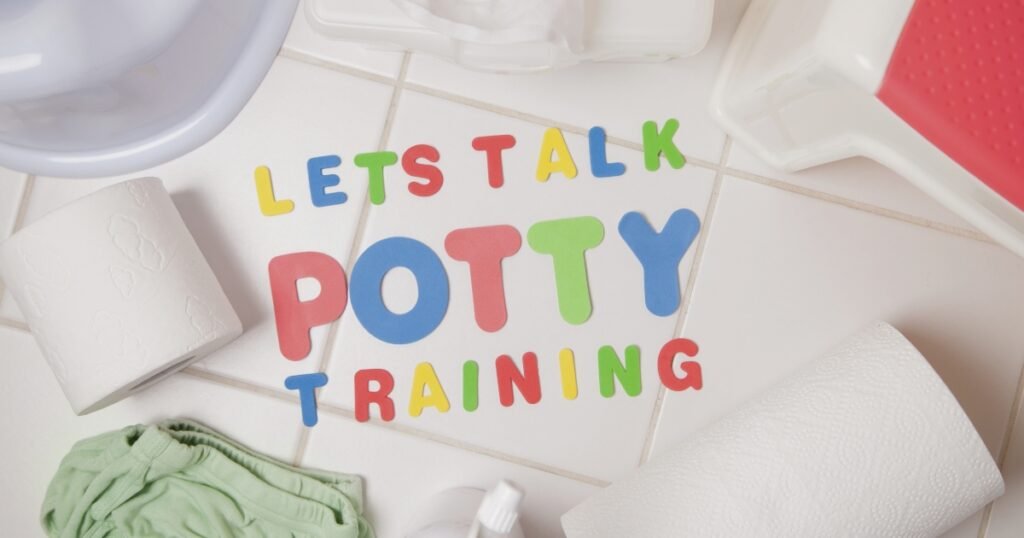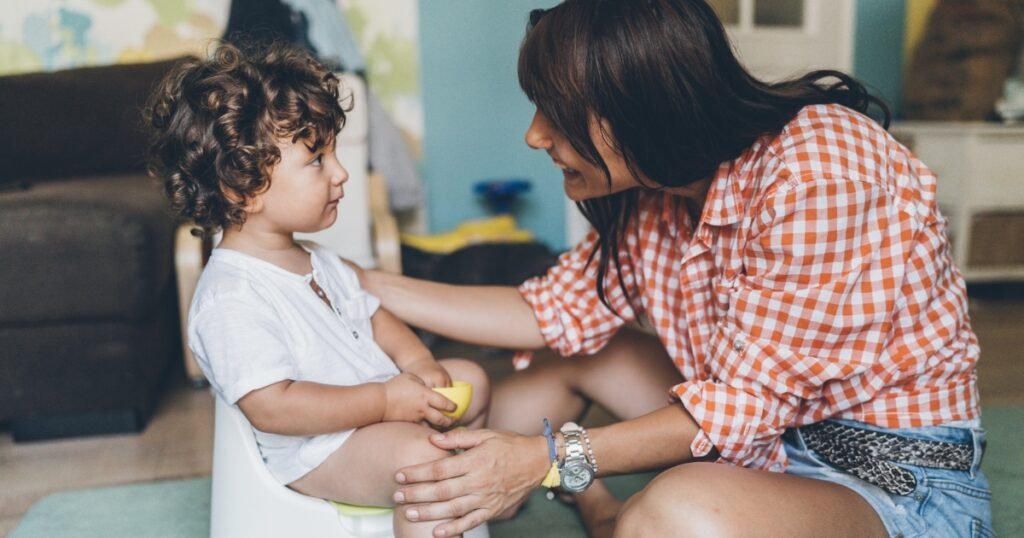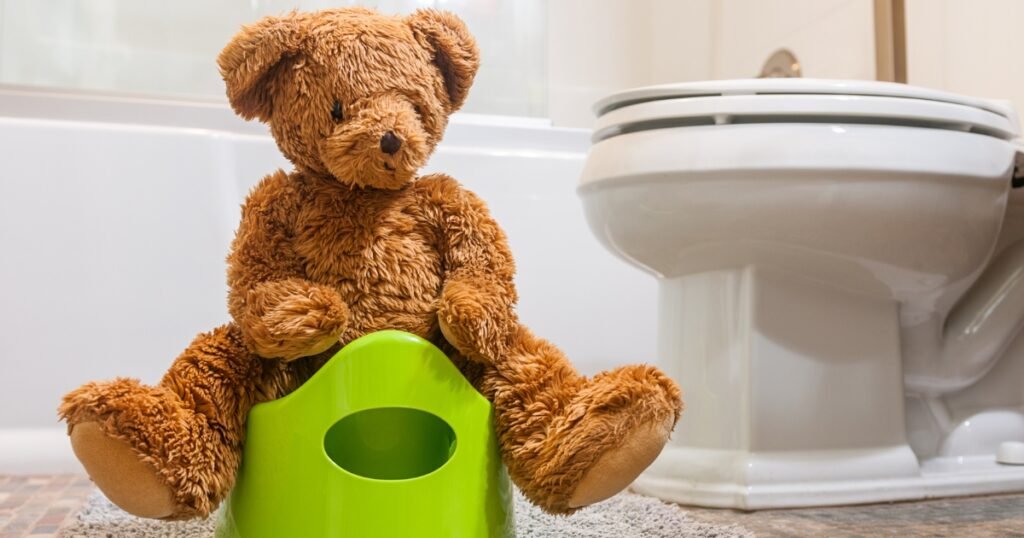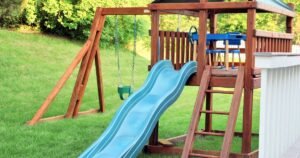Last Updated on 25 June 2024
Potty training is a major milestone for both children and parents. It can be an exciting and sometimes challenging time as children learn to use the toilet independently. One tool that can make the potty training journey a little easier is our free printable potty training chart. These charts visually represent a child’s progress and can serve as a motivating and rewarding tool.
Printable potty training charts are available in various designs and themes, appealing to children of different ages and interests. Whether your child loves dinosaurs, princesses, or superheroes, there is a potty training chart that will capture their attention. The charts can be customized with the child’s name and filled with stickers or stars as the child successfully uses the potty.
Using a potty training chart has many benefits. It helps children track their progress and gives them a sense of accomplishment as they fill the chart with stickers or stars. It also provides a visual reminder of their goals and can help establish a routine and consistency in potty training. Additionally, potty training charts can be a fun and interactive way for parents and children to celebrate each milestone and make the journey more enjoyable.
How to use a Free Printable Potty Training Chart
Using a printable potty training chart is simple and effective. Here’s how to make the most of this tool:
Choose a potty training chart that appeals to your child’s interests. Many designs are available, ranging from princesses to dinosaurs to superheroes. You can also find customizable charts to add your child’s name or photo.
Once you have chosen a chart, print it out and hang it in a prominent place where your child can see it easily. This could be in the bathroom or near their potty training area. Ensure it is at their eye level so they can engage with it easily.
Explain the purpose of the chart to your child. Tell them they will receive a sticker or star for each successful potty use. This will help them understand how the chart works and give them a sense of motivation.
Encourage your child to use the potty regularly, and celebrate each successful use by allowing them to place a sticker or star on their chart. Praise their efforts and provide positive reinforcement for their achievements.
Once the chart is filled with stickers or stars, you can offer a reward to motivate your child further. This could be a small toy, a special treat, or a fun activity. The reward should be something that your child finds exciting and motivating.

Free printable potty training charts can help make potty training more engaging and rewarding for parents and children. It visually represents progress and encourages positive reinforcement throughout the journey.
What are Some Ways to Prep for Potty Training?
Before diving into potty training, preparing yourself and your child is important. Here are some ways to prep for the potty training journey:
- Set potty training goals: Determine what you hope to achieve through potty training. Whether teaching your child to use the toilet independently or staying dry throughout the day, having clear goals will help guide your efforts.
- Establish a daily routine: Create a consistent routine around potty training. This could include regular potty breaks, designated times for sitting on the toilet, and reminders to use the bathroom. Consistency will help your child understand and adapt to the new routine.
- Introduce the concept of potty training: Talk to your child about using the toilet and explain why it is important. Read books or watch videos about potty training to help familiarize them with the process.
- Make potty time fun: Create a positive and enjoyable environment around potty training. Use colorful charts, stickers, and rewards to make the experience more engaging for your child.
- Be patient and understanding: Remember that every child is different and will progress at their own pace. Stay patient and supportive throughout the potty training journey, and celebrate each small success.
Preparing and creating a positive environment can set your child up for a successful potty training experience.
visual chart for potty training Toddler Non-Verbal toileting and autism hygiene
For toddlers who are non-verbal, have autism, or struggle with verbal communication, a visual potty training chart can be extremely helpful. This type of chart uses visuals and symbols to represent the steps of using the toilet. Here are some key points about visual charts for potty training:
- Visual cues: Visual charts use pictures or symbols to represent each step of the potty training process. These cues can help children understand and follow the sequence of events.
- Pictorial representation: Instead of relying on verbal instructions, visual charts provide a visual representation of each step, making it easier for non-verbal or autistic toddlers to understand the process.
- Hygiene reminders: Visual charts can also include symbols or pictures that remind children to wash their hands after using the toilet. This helps reinforce good hygiene habits.
- Consistency and routine: Visual charts provide a consistent visual reminder of the steps involved in potty training. This can help establish a routine and make the process more predictable for children.
Using a visual chart for potty training can help non-verbal or autistic toddlers understand and follow the steps involved in using the toilet. It provides a visual representation of the process and reinforces good hygiene habits.
The Benefits of Using Potty-Training Charts
Using potty-training charts can have several benefits for both children and parents. Here are some of the key advantages:
- Positive reinforcement: Potty-training charts visually represent a child’s progress and allow positive reinforcement. Each time a child successfully uses the potty, they can add a sticker or mark a milestone on the chart. This positive reinforcement encourages children to continue practicing good potty habits.
- Establishing routine: Potty-training charts help establish a routine and provide consistency in the potty-training process. They serve as a visual reminder for children to use the potty regularly.
- Tracking progress: Potty-training charts allow parents to track their child’s progress and celebrate each milestone achieved. This helps parents and children stay motivated and engaged in the potty-training journey.
- Building confidence: As children fill up their potty-training charts with stickers or marks, they develop a sense of accomplishment and build confidence in their ability to use the potty independently.
- Encouragement and motivation: Potty-training charts encourage children to continue practicing good potty habits. The visual representation of progress and the rewards associated with reaching milestones can motivate children.
Overall, potty-training charts can be a valuable tool in the potty-training process, providing positive reinforcement, establishing routine, tracking progress, building confidence, and encouraging children to stay motivated.
How to Use a Potty-Training Chart
Using a potty-training chart is simple and can be a fun way to motivate your child during the potty-training process. Here are a few key steps to effectively use a potty-training chart:
- Choose a chart that appeals to your child’s interests.
- Hang the chart in a prominent place, like the bathroom or near the child’s potty training area.
- Explain to your child the purpose of the chart and how they can earn stickers or marks for each successful use of the potty.
- Encourage your child to use the potty regularly and celebrate each milestone by allowing them to add a sticker or mark on the chart.
- Once the chart is filled with stickers or marks, offer a small reward or celebration to motivate your child further.
Using a potty-training chart can provide visual motivation and positive reinforcement for your child during the potty-training process.
How to Introduce a Potty-Training Chart to Your Toddler
Introducing a potty-training chart to your toddler can be exciting and engaging. Here are some tips on how to introduce a potty-training chart effectively:
- Choose a chart with your child: Involve your toddler in selecting a potty-training chart. Let them choose a design or character that they find appealing. This will make them more invested in using the chart.
- Explain the chart’s purpose: Sit down with your toddler and explain how the chart works. Let them know they will earn stickers or marks for each successful potty use. Emphasize that the chart is a way to celebrate their progress and achievements.
- Hang the chart in the right place: Hang the chart in a place easily accessible and visible to your toddler. Consider placing it in the bathroom or near their potty training area. Ensure it is at their eye level so they can engage with it easily.
- Reinforce the chart with rewards: As your toddler fills the chart with stickers or marks, offer small rewards or celebrations to reinforce their progress. This could be a favorite snack, extra playtime, or a special activity. The rewards should be meaningful to your child and motivate them to continue using the potty.
By involving your toddler in the process and making the chart fun and engaging, you can successfully introduce a potty-training chart and motivate your child to use the potty.
Potty-Training Reward Ideas
Rewarding your child for their potty-training achievements can provide additional motivation and make the process more enjoyable. Here are some potty-training reward ideas:
- Small toys or trinkets: Offer a small toy or trinket as a reward for reaching certain milestones on the potty-training chart.
- Extra incentives: Provide additional incentives such as extra playtime or a special treat for consistent potty use.
- Sticker rewards: Let your child choose a sticker from a sticker sheet each time they successfully use the potty.
- Small prizes: Consider offering small prizes to reach specific goals or milestones, such as a favorite snack or a new coloring book.
Remember, the rewards should be age-appropriate and meaningful to your child. They should serve as positive reinforcement and motivate your child to continue practicing good potty habits.
How to Effectively Utilize Potty Training Charts
To make the most of potty training charts, follow these tips:
- Select a chart that appeals to your child’s interests.
- Hang the chart in a prominent place where your child can see it easily.
- Explain the chart’s purpose and how your child can earn stickers or marks for each successful use of the potty.
- Encourage your child to use the potty regularly and celebrate each milestone by allowing them to add a sticker or mark on the chart.
- Offer small rewards or celebrations once the chart is filled with stickers or marks to motivate your child further.
By following these steps, you can effectively utilize potty training charts and create a positive and rewarding experience for your child.
Selecting the Right Chart with Your Child
When selecting a potty training chart for your child, it’s important to choose one that captures their interest and engages their imagination. Here are some tips for selecting the right chart:
- Consider your child’s interests: Choose a chart that features their favorite characters or themes. This will make the chart more appealing and motivating for your child.
- Hang the chart in the right place: Hang the chart in a location that is easily visible and accessible to your child. The bathroom or their potty training area is usually the best place. Make sure the chart is at their eye level so they can easily engage with it.
- Download customizable charts: Look for printable charts that can be customized with your child’s name or photo. This personalization can make the chart feel more special and unique to your child.
By considering your child’s interests, hanging the chart in the right place, downloading customizable charts, and exploring ideas on Pinterest, you can select the perfect potty training chart for your child.
Setting Clear Goals and Rewards
When using a potty training chart, it’s important to set clear goals and rewards for your child. Here are some tips for setting goals and rewards effectively:
- Define potty training goals: Determine what specific behaviors or milestones you want your child to achieve. This could include using the toilet independently, staying dry throughout the day, or washing hands afterward.
- Establish the number of stickers or marks required: Decide how many stickers or marks your child needs to earn for each goal or milestone. This will give them a clear target to work towards.
- Create a reward system: Choose meaningful rewards for your child. These could include small toys, favorite treats, or special activities. Ensure the age-appropriate rewards motivate your child to continue practicing good potty habits.
- Be consistent: Consistency is key when using a potty training chart. Stick to the goals and rewards you have established, and be consistent in providing positive reinforcement for your child’s achievements.
By setting clear goals, establishing the number of stickers or marks required, creating a reward system, and maintaining consistency, you can effectively use a potty training chart to motivate your child and celebrate their successes.
Encouraging Daily Progress
Encouraging daily progress is essential for successful potty training. Here are some tips to help you promote your child’s daily progress:
- Establish a consistent routine: Create a daily routine that includes regular potty breaks, designated times for sitting on the toilet, and reminders to use the bathroom. Consistency will help your child understand and adapt to the routine.
- Provide positive reinforcement: Praise your child for their efforts and achievements throughout the day. Offer words of encouragement and celebrate each successful use of the potty. Positive reinforcement will motivate your child and reinforce good potty habits.
- Use the potty training chart: Utilize the potty training chart as a visual reminder of your child’s progress. Encourage your child to add stickers or marks to the chart after each successful potty use. This will help them see their daily progress and stay motivated.
- Celebrate small victories: Celebrate each small victory and progress your child makes. Whether it’s staying dry for an extended period or using the potty independently, recognize and celebrate their achievements. This will boost their confidence and encourage them to continue potty training.
By establishing a routine, providing positive reinforcement, utilizing the potty training chart, and celebrating small victories, you can encourage your child’s daily progress and make potty training a positive and rewarding experience.
Maximizing Success with Your Potty Training Chart
To maximize success with your potty training chart, consider the following tips:
- Make it fun: Use colorful charts, stickers, and rewards to make your child’s potty training experience enjoyable.
- Be consistent: Stick to the routine and goals you have established with your child. Consistency is key in reinforcing good potty habits.
- Offer praise and positive reinforcement: Celebrate each milestone and success your child achieves. Offer words of encouragement and praise for their efforts.
- Personalize the chart: Customize it with your child’s name or photo to make it more special and engaging.
By incorporating these tips into your potty training routine, you can maximize the success of your potty training chart and make the process more enjoyable for your child.
Incorporating Fun Sticker Rewards
Using sticker rewards can be a fun and effective way to motivate your child during the potty training. Here are some ideas for incorporating fun sticker rewards:
- Use themed stickers: Choose stickers that feature your child’s favorite characters, such as Daniel Tiger, Elmo, or mermaids. This will make the stickers more exciting and appealing to your child.
- Create a sticker chart: Design a chart where your child can place their stickers. This could be a simple grid with designated spaces for each sticker.
- Offer variety: Mix the sticker rewards using different designs and characters. This will keep your child engaged and excited about earning stickers.
- Celebrate milestones with special stickers: Use special stickers to mark important milestones, such as using the potty independently or staying dry all day. These special stickers can be a visual reminder of your child’s progress.
By incorporating fun sticker rewards into your potty training routine, you can make the process more enjoyable for your child and provide additional motivation for their success.
Using Positive Reinforcement Techniques
Positive reinforcement techniques are a highly effective way to motivate and encourage your child during the potty training process. One of the most popular and successful methods is printing potty training charts. These charts visually represent your child’s progress and give them a sense of accomplishment. Each time your child successfully uses the potty or reaches a milestone, they can earn a sticker to place on the chart.

This positive reinforcement helps reinforce the desired behavior and encourages them to continue using the potty. It’s important to celebrate and acknowledge every achievement, no matter how small, as it will boost your child’s confidence and motivation. In addition to stickers, you can also offer other rewards, such as special treats or activities, to further encourage your child’s progress. Positive reinforcement techniques, such as using potty training charts, are a great way to make the potty training process more fun and successful for your child.
Celebrating Milestones
Celebrating milestones during the potty training journey is important to keep your child motivated and engaged. No matter how small, every milestone reached is a step forward in the potty training process. Celebrating these achievements helps your child feel proud of their progress and encourages them to continue.
Each time your child successfully uses the potty or reaches a milestone, they can earn a sticker or mark their progress on the chart. This visual representation of their achievements can be a source of pride and motivation for your child. You can also celebrate milestones with small rewards or treats your child enjoys. Whether it’s a special outing, a favorite snack, or extra playtime, these celebrations can further reinforce your child’s positive behavior and make the potty training journey more enjoyable for both of you.
Tips for overcoming common potty training challenges
Potty training can come with its fair share of challenges, but with a little patience and perseverance, they can be overcome. Here are some common challenges and tips for overcoming them:
| Challenge | Solution |
| Regression | If your child starts regressing in their potty training progress, it’s important to stay calm and patient. Offer support and reassurance, and try to identify any triggers or changes that may have caused the regression. Stick to a consistent routine and reinforce positive behavior. |
| Accidents | Accidents are a normal part of the potty training process. Instead of getting upset or frustrated, calmly clean up the accident and encourage your child to try again. Offer praise and reassurance for successful attempts, and remind them of the steps involved in using the potty. |
| Refusal | If your child refuses to use the potty, it’s important to respect their feelings and avoid forcing them. Instead, offer positive reinforcement and encouragement. You can also try introducing new incentives or rewards to make using the potty more appealing. |
| Nighttime Training | Nighttime training can take longer and be more challenging. Be patient and continue providing support and encouragement. Limit fluids before bedtime and establish a consistent bedtime routine. Use a nighttime training system, such as pull-ups or waterproof bed sheets, to manage accidents. |
| Traveling | Potty training while traveling can be tricky, but with some preparation, it can be manageable. Bring a portable potty seat or seat covers for public restrooms. Stick to your potty training routine as much as possible and offer praise and rewards for successful bathroom trips while traveling. |
Potty training doesn’t have to be a daunting task with the help of our free printable potty training charts. Setting clear goals, using positive reinforcement, and celebrating milestones are key strategies for success. Incorporating fun stickers and encouraging daily progress can make the journey enjoyable for your little one. Remember, consistency is key. If you are ready to start this rewarding journey, download our free printable potty training charts and watch your child thrive!









